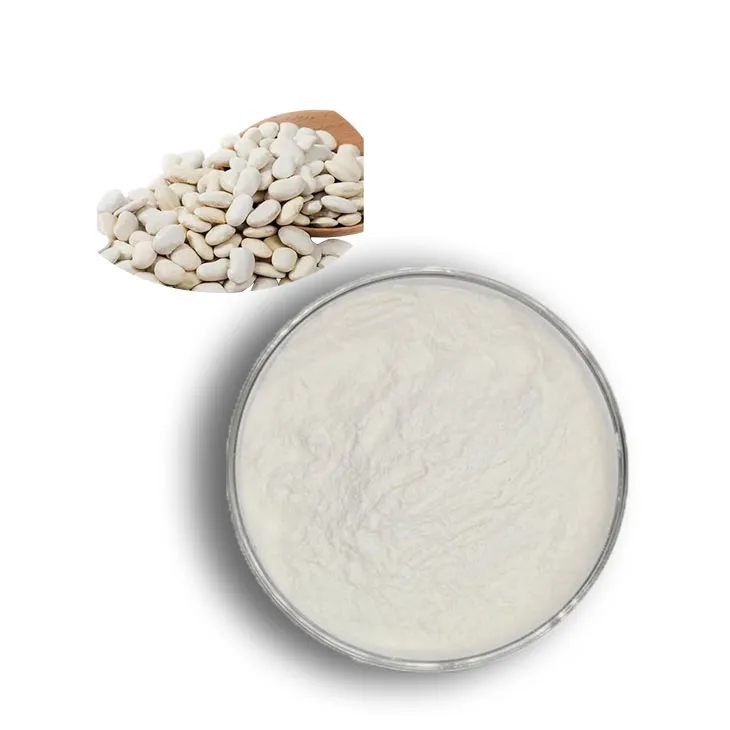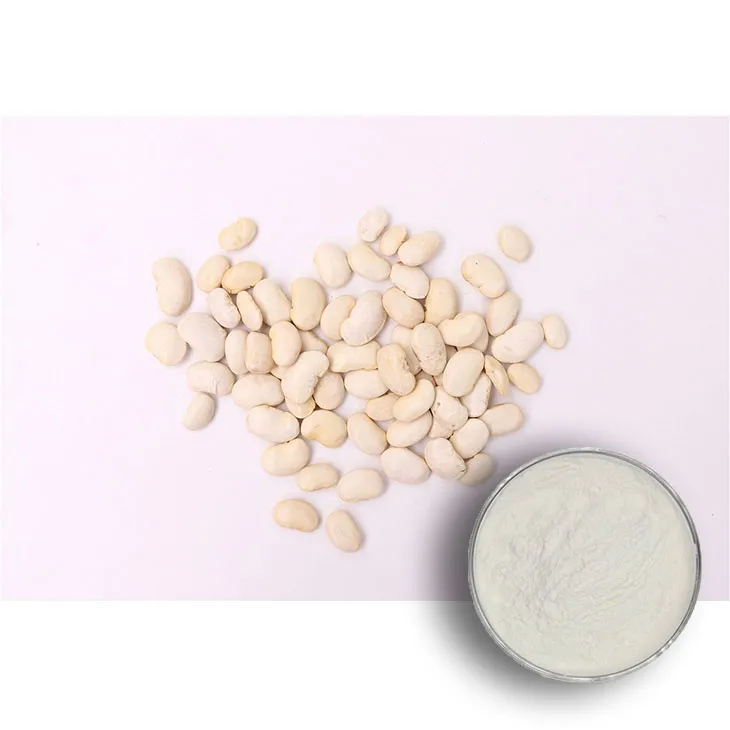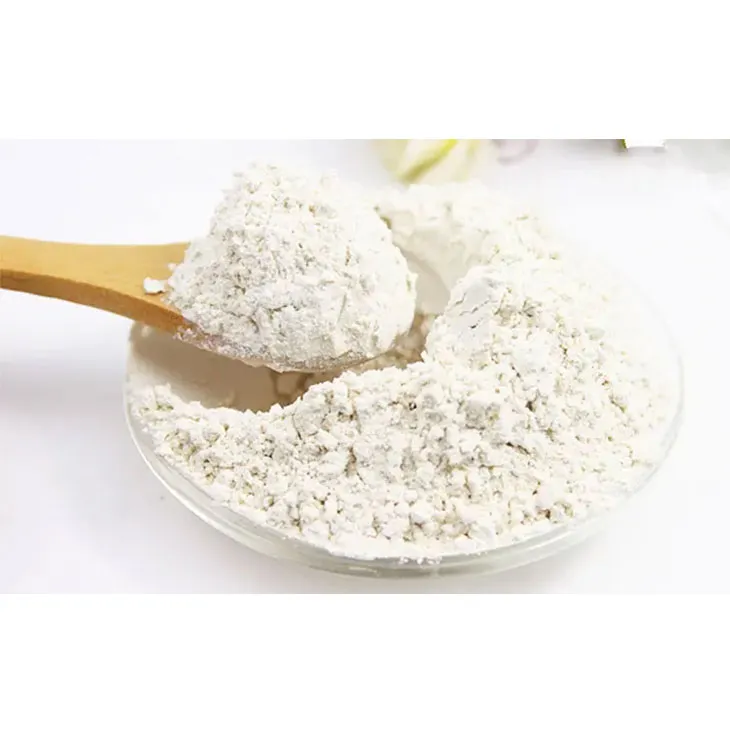- 0086-571-85302990
- sales@greenskybio.com
The process of extracting phaseolin from kidney bean extract.
2024-11-26

1. Introduction
Phaseolin is an important protein found in kidney beans. It has a wide range of applications in various industries, including food, pharmaceuticals, and biotechnology. The extraction of phaseolin from Kidney Bean Extract is a complex process that requires careful consideration of several factors. This article will explore the process of extracting phaseolin from Kidney Bean Extract, including raw material preparation, extraction mechanisms, quality control measures, and optimization strategies.

2. Raw Material Preparation
2.1 Selection of Kidney Beans
The first step in preparing the raw material for phaseolin extraction is the selection of high - quality kidney beans. Key factors to consider during selection include the variety of the bean, its origin, and its freshness. Different varieties of kidney beans may have different levels of phaseolin content. For example, some traditional varieties may be richer in phaseolin compared to modern hybrids. The origin of the beans can also affect their quality, as beans grown in different regions may be exposed to different environmental conditions, which can influence their composition. Freshness is crucial as stale beans may have reduced levels of phaseolin or may be contaminated with microorganisms.
2.2 Cleaning and Sorting
Once the kidney beans are selected, they need to be thoroughly cleaned and sorted. Cleaning involves removing any dirt, debris, or foreign matter from the surface of the beans. This can be achieved through washing with clean water. Sorting is done to remove any damaged, diseased, or abnormal beans. This ensures that only healthy and intact beans are used for extraction, which can improve the quality of the final phaseolin product.
2.3 Drying
After cleaning and sorting, the kidney beans are usually dried. Drying helps to reduce the moisture content of the beans, which is important for several reasons. Firstly, it prevents the growth of microorganisms during storage. Secondly, it can make the extraction process more efficient, as excessive moisture can interfere with the extraction mechanisms. The drying process should be carefully controlled to avoid over - drying, which can damage the beans and reduce the phaseolin content. The ideal moisture content after drying is typically around 10 - 12%.

3. Extraction Mechanisms
3.1 Solvent Extraction
Solvent extraction is one of the most commonly used methods for extracting phaseolin from Kidney Bean Extract. In this method, a suitable solvent is used to dissolve the phaseolin from the bean matrix. Common solvents used for this purpose include ethanol, methanol, and water - based solvents. Ethanol is often preferred due to its relatively low toxicity and good solubility properties. The extraction process typically involves soaking the dried kidney beans in the solvent for a certain period of time, usually several hours to days. During this time, the phaseolin gradually dissolves in the solvent, forming a solution. The extraction efficiency can be influenced by several factors, such as the solvent - to - bean ratio, the temperature of the extraction, and the agitation rate. A higher solvent - to - bean ratio can generally lead to a higher extraction yield, but it also increases the cost of the process. Increasing the temperature can also enhance the extraction efficiency, but excessive heat can cause denaturation of the phaseolin. Agitation helps to improve the contact between the solvent and the beans, facilitating the dissolution of phaseolin.
3.2 Enzyme - Assisted Extraction
Enzyme - assisted extraction is another approach that has been explored for phaseolin extraction. Enzymes can be used to break down the cell walls of the kidney beans, making it easier for the phaseolin to be released. For example, cellulase and protease enzymes can be used. Cellulase can break down the cellulose in the cell walls, while protease can hydrolyze the proteins that may be associated with the phaseolin and impede its release. The enzyme - assisted extraction process typically involves adding the appropriate enzymes to the kidney bean slurry and incubating it at a suitable temperature and pH for a certain period of time. This method can potentially increase the extraction yield and improve the quality of the extracted phaseolin. However, it also requires careful control of the enzyme concentration, incubation conditions, and reaction time to ensure optimal results.
3.3 Ultrasonic - Assisted Extraction
Ultrasonic - assisted extraction is a relatively new technique that has shown promise in phaseolin extraction. Ultrasonic waves can create cavitation bubbles in the solvent, which collapse and generate high - pressure and high - temperature micro - environments. These micro - environments can disrupt the cell structure of the kidney beans, enhancing the release of phaseolin. The ultrasonic - assisted extraction process is usually carried out by immersing the kidney beans in the solvent and subjecting them to ultrasonic waves for a certain period of time. The extraction efficiency can be optimized by adjusting parameters such as the ultrasonic power, frequency, and extraction time. This method can significantly reduce the extraction time compared to traditional solvent extraction methods, while also achieving a relatively high extraction yield.

4. Quality Control Measures for the Final Product
4.1 Purity Analysis
One of the most important quality control measures for the extracted phaseolin is purity analysis. This involves determining the percentage of phaseolin in the final product and ensuring that it is free from contaminants. Techniques such as high - performance liquid chromatography (HPLC) and electrophoresis can be used for purity analysis. HPLC can separate and quantify the different components in the phaseolin extract, allowing for accurate determination of the phaseolin content. Electrophoresis can also be used to analyze the protein composition of the extract and detect any impurities or degraded forms of phaseolin.
4.2 Functional Properties Testing
The functional properties of the extracted phaseolin, such as its solubility, emulsifying ability, and foaming properties, need to be tested. These properties are important for its applications in different industries. For example, in the food industry, the solubility of phaseolin can affect its use as an ingredient in food products. The emulsifying ability is crucial for its role in emulsified food systems, such as salad dressings and mayonnaise. Foaming properties are relevant for products like whipped toppings. Testing methods for these functional properties include standard laboratory assays specific to each property.
4.3 Microbiological Testing
Microbiological testing is essential to ensure that the extracted phaseolin is free from harmful microorganisms. This includes testing for bacteria, yeasts, and molds. The presence of microorganisms can not only affect the quality of the phaseolin but also pose a risk to the end - users, especially in applications such as food and pharmaceuticals. Microbiological testing typically involves culturing samples of the phaseolin extract on appropriate growth media and observing for the growth of any microorganisms. If any microbial contamination is detected, appropriate measures such as sterilization or purification need to be taken to ensure the safety of the product.

5. Optimization of the Extraction Process
5.1 Response Surface Methodology
Response surface methodology (RSM) can be used to optimize the extraction process of phaseolin. RSM is a statistical and mathematical technique that can model the relationship between the input variables (such as solvent - to - bean ratio, temperature, and extraction time) and the output variables (such as extraction yield and purity). By conducting a series of experiments with different combinations of input variables and analyzing the results using RSM, the optimal conditions for the extraction process can be determined. This can help to maximize the extraction yield and quality of the phaseolin while minimizing the cost and time involved in the process.
5.2 Factorial Design
Factorial design is another experimental design method that can be used for optimization. It involves systematically varying the levels of multiple factors simultaneously and observing the effects on the response variables. For example, in phaseolin extraction, factors such as the type of solvent, enzyme concentration (if enzyme - assisted extraction is used), and ultrasonic power (if ultrasonic - assisted extraction is used) can be varied in a factorial design experiment. By analyzing the results of the factorial design experiment, the main effects of each factor and the interactions between factors can be determined, which can help in identifying the optimal combination of factors for the extraction process.
5.3 Process Integration
Process integration can also be considered for optimizing the phaseolin extraction process. This involves combining different extraction methods or steps in a more efficient way. For example, a combination of enzyme - assisted extraction followed by solvent extraction may result in a higher extraction yield compared to using either method alone. By carefully integrating different processes, it is possible to achieve better overall performance in terms of extraction efficiency, product quality, and cost - effectiveness.
6. Conclusion
The extraction of phaseolin from kidney bean extract is a multi - step process that requires careful attention to raw material preparation, extraction mechanisms, quality control measures, and process optimization. By selecting high - quality kidney beans, using appropriate extraction methods such as solvent extraction, enzyme - assisted extraction, or ultrasonic - assisted extraction, and implementing strict quality control measures, it is possible to obtain high - quality phaseolin products. Optimization of the extraction process through techniques such as response surface methodology, factorial design, and process integration can further improve the efficiency and cost - effectiveness of the process. The extracted phaseolin has significant potential for applications in various industries, and continued research in this area can lead to further improvements in the extraction process and the development of new applications for phaseolin.
FAQ:
What are the initial steps in preparing the kidney bean extract for phaseolin extraction?
First, high - quality kidney beans need to be selected. They should be clean, free from mold and other contaminants. Then, the beans are typically dried and ground into a fine powder. This powder serves as the starting material for the extraction process. Grinding helps to increase the surface area, facilitating better extraction in the subsequent steps.
What are the main extraction mechanisms used to extract phaseolin?
Common extraction mechanisms include solvent extraction. A suitable solvent, such as ethanol or other organic solvents, is used. The solvent penetrates the ground kidney bean powder and dissolves the phaseolin. Another mechanism could be enzymatic hydrolysis in some cases, which can break down certain components to release phaseolin more effectively. Centrifugation or filtration is then often used to separate the phaseolin - containing solution from the solid residue.
How are quality control measures implemented during the extraction of phaseolin?
Quality control starts with the raw materials. The purity and quality of the kidney beans are checked. During the extraction process, parameters like solvent concentration, extraction time, and temperature are closely monitored. For the final product, techniques such as chromatography can be used to check the purity of phaseolin. Also, tests for contaminants, including heavy metals and pesticides, are carried out to ensure the safety and quality of the phaseolin extract.
What are the key factors to optimize the phaseolin extraction process?
One important factor is the choice of solvent. Different solvents may have different extraction efficiencies. The ratio of solvent to the kidney bean powder also matters. Additionally, extraction time and temperature can significantly impact the yield and quality of phaseolin. Optimization may also involve using advanced extraction techniques or equipment. For example, ultrasonic - assisted extraction can enhance the extraction efficiency by disrupting the cell walls of the kidney bean powder more effectively.
How does the phaseolin extraction process meet the requirements of different industries?
Different industries have different purity and quantity requirements for phaseolin. For the food industry, strict safety and purity standards are essential, so the extraction process needs to focus on removing contaminants and ensuring the product is food - grade. In the pharmaceutical industry, higher purity levels are often required, so more refined purification steps may be added. For research purposes, accurate quantification and high - quality phaseolin are needed, which may involve more precise extraction and analysis techniques.
Related literature
- Phaseolin: Properties, Extraction and Applications"
- "Optimizing Kidney Bean Phaseolin Extraction for Industrial Use"
- "Quality Assurance in Phaseolin Extraction from Kidney Bean Extract"
- ▶ Hesperidin
- ▶ citrus bioflavonoids
- ▶ plant extract
- ▶ lycopene
- ▶ Diosmin
- ▶ Grape seed extract
- ▶ Sea buckthorn Juice Powder
- ▶ Beetroot powder
- ▶ Hops Extract
- ▶ Artichoke Extract
- ▶ Reishi mushroom extract
- ▶ Astaxanthin
- ▶ Green Tea Extract
- ▶ Curcumin Extract
- ▶ Horse Chestnut Extract
- ▶ Other Problems
- ▶ Boswellia Serrata Extract
- ▶ Resveratrol Extract
- ▶ Marigold Extract
- ▶ Grape Leaf Extract
- ▶ blog3
- ▶ blog4
-
Jujube extract of the best quality.
2024-11-26
-
Bulk purchase of silymarin extract.
2024-11-26
-
Certified organic baicalin.
2024-11-26
-
The best organic L - tyrosine.
2024-11-26
-
100% Pure Organic Mulberry Extract.
2024-11-26
-
Organic Melatonin Powder Factory.
2024-11-26
-
White Peony Extract
2024-11-26
-
Rose Hip Extract
2024-11-26
-
Beetroot juice Powder
2024-11-26
-
Echinacea Extract
2024-11-26
-
Nettle Root Extract
2024-11-26
-
Carrageenan Extract Powder
2024-11-26
-
Konjac Powder
2024-11-26
-
Troxerutin
2024-11-26
-
Bayberry Extract
2024-11-26
-
Uridine-5'-monophosphate Disodium salt
2024-11-26





















